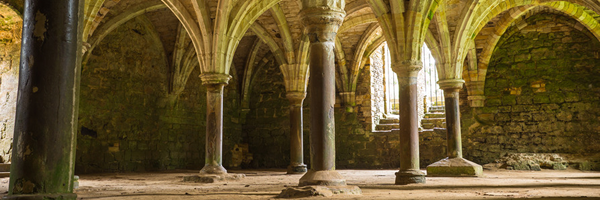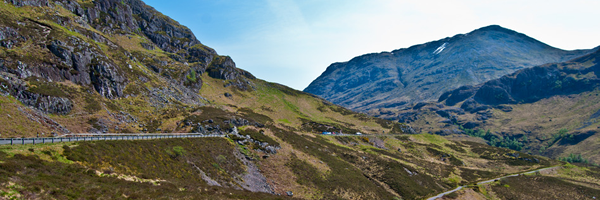Updated December 2023
Contents
Introduction
It may be something of a cliché to say that the British Isles are steeped in history – but like all clichés, there is more than a grain of truth in the statement.
In every corner of these relatively small isles, you are likely to stumble across some site, monument, ruin or building with its own fascinating story to tell.
And the great thing is that so many of these historic sites seem to have stolen some of the best and most scenic parts of the country – from the rolling fields of an idyllic England, to forest clad hillsides, to rugged coastlines, and desolate moors.
So many are destinations you might want to visit for longer than just one day. What better way, therefore, than to hitch up your caravan and stay within hailing distance of the sites you want to visit. With a caravan in tow, of course, you can even afford to take your library of relevant history books and research notes along with you.
Whether you are about to buff up your history or are already a seasoned history buff, you might find this tour of selected sites around the UK a handy source of suggestions about what you might find at any particular destination and where you might choose to pitch your caravan during your visit.
Southeast England
Where else to start but probably the one date in British history that practically everyone knows – the Battle of Hastings in 1066.
Visit the battlefield itself and imagine the scene as King Harold and William the Conqueror fought it out or take a look at the visitor centre for more detailed accounts and interpretations of this key turning point in British history.
Where to stay
- Brakes Coppice Park camping and caravanning site – can be found in a secluded valley approximately mid-way between Battle itself and the seaside town of Hastings, so only 2 miles from the historic site. The 14 acre park has a total of some 60 pitches for both caravans and tents;
- Battle Normanhurst Court Caravan Club Site – close to the town of Battle itself and located alongside the Battle Trail, this Caravan Club site boasts a total of 139 pitches, 89 of which are on hard standing;
- Senlac Wood Campsite, Battle, Sussex – similarly located very close to the historic battlefield, this site has both grass and hard standing pitches, 16 amp electric hook-ups and the luxury of a heated toilet block, with free hot showers.
Described as possibly the loveliest castle in the world, Leeds Castle is set in extensive parkland covering some 500 acres.
It is the perfect spot to soak up some of its more than 900 years of history, whilst at the same time viewing falconry displays and other special attractions throughout the year.
Where to stay
- New Romney Caravan Park – is a large site for touring caravans, tents and holiday homes, situated in Greatstone, Kent, which is right on the coast and about a 40 minute drive from Leeds Castle;
- Bearstead Caravan Site – this Caravan Club site is at Hollingbourne, only a couple of miles from Maidstone and therefore but a stone’s throw from the attraction of Leeds Castle. It offers a total of 66 pitches, 40 of which are on hard standing;
- Occupying 36 acres in the heart of the Garden of England is Tanner Farm Park, about 10 miles from Leeds Castle and offering a total of 120 pitches for both caravans and tents, all with 16 amp electric hookup.
Windsor Castle, Windsor, Berkshire
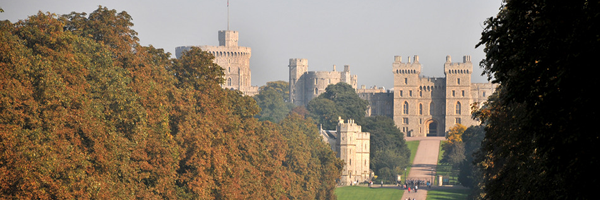
Take an especially regal approach whilst buffing up on your history of this castle which to this day is still an official residence of the reigning monarch. Visit the state apartments in use today, take in one of the occasional exhibitions. or join an evening tour of the castle.
Where to stay
- Hurley Riverside Park – is on the banks of the Thames at Maidenhead, just 5 miles or so downstream from Windsor. The 15-acre site is divided into four fields, which have marked pitches on grass and hard standing;
- Also in Maidenhead – on the riverside towpath running between Maidenhead and Windsor – is Amerden Caravan and Camping Park, a small family-owned site with both grass and hard standing pitches;
- Closer to London, but still only a 10 mile drive away from Windsor is the Camping and Caravanning Club Site at Chertsey, which offers a total of 150 pitches in a lightly wooded location;
- The Caravan Club Site at Wyatts Covert in the village of Denham, Buckinghamshire, is only 18 miles from central London, yet still only a 10-minute drive from Windsor Castle and offers 50 all hard standing pitches.
Southern England
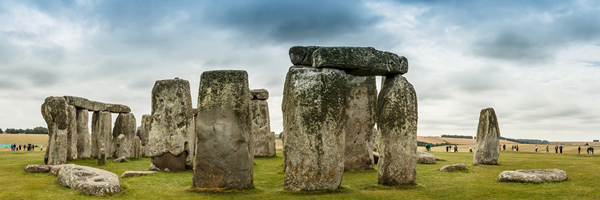
What could be more iconic – and what in its 5,000 years is likely to have a longer history – than the impressive stone monument of Stonehenge in Wiltshire.
The site is world renowned, of course, and well deserved too, if only for the estimated 30 million man-hours it took to build. Speculation continues about whether its purpose was a place for human sacrifice or the earliest beginnings of astronomy – why not pay it a visit and come up with your own ideas about the purpose or purposes it may have served.
Where to stay
- The prehistoric monument rises from the wide open spaces of Salisbury Plain, with little to disturb your view, yet the Stonehenge Campsite in the village of Berwick St James is only 2 short miles away from the new visitor experience centre. Make sure to book early, though, since there are hard standing pitches for only 11 caravans;
- Stonehenge Touring Park, situated in the village of Orcheston, and also only 3½ miles from the main monument, is equally handily situated, with hard standing pitches for up to 12 caravans;
- Salisbury Hillside Caravan Club Site, is only slightly further away, on a hill overlooking the nearby city of Salisbury and offering a total of 50 pitches, 7 of which are on hard standing – also open to non-members of the Caravan Club;
Some might consider it the lesser known cousin of its nearby neighbour at Stonehenge, but Avebury and its “rings” of stone and earthworks is also more than 4,500 years old – and the Neolithic answer to a modern city.
If you like to combine some serious walking with your study of early history, there is a footpath running some 45 miles between the two Stone Age sites.
Where to Stay
- Postern Hill Campsite is a mere 14 mile walk across the Marlborough Downs set in the wooded surroundings of the ancient Savernake Forest, itself but a short stroll into the market town of Marlborough and offering all grass pitches for your caravan;
If it is marine history which interests you, you cannot fail to be drawn to this historic site on the south coast of Hampshire, on the banks of the Beaulieu River.
In the 18th century it was the heart of British shipbuilding (in timber from the nearby New Forest), where the likes of Admiral Nelson’s fleet was launched. The village of Buckler’s Hard today remains largely unchanged.
Where to stay
- Buckler’s Hard is ideally placed for pitching your caravan in the even more ancient, leafy glades of the New Forest, with a host of sites just a few miles from the centre of maritime history – Aldridge Hill Campsite, for instance is just one, just 2 miles from the heart of the New Forest at Brockenhurst;
- A 20-mile or so drive from Buckler’s Hard is the Camping and Caravanning site at Verwood, within the New Forest National Park – but note that most pitches are sloping, so wheel chocks will be needed;
- Also in the heart of the New Forest, at Brockenhurst, is the Long Meadow Campsite, a 19-acre meadow which has electric hook-ups, grass and hard standing pitches for up to 100.
Southwest England
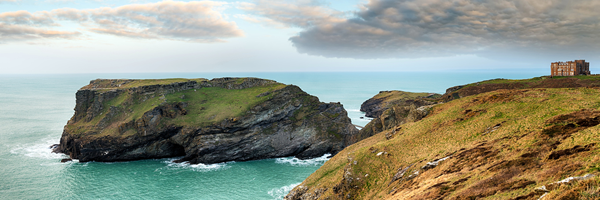
It is difficult to imagine a more rugged and storm-swept location for the 800 year-old ruins of a castle quite as magical as Tintagel. Indeed, there is archaeological evidence to show that a castle stood on the same site as early as the fifth century, in King Arthur’s time.
You might need to really buff up your history of medieval England to determine whether this King Arthur was myth, legend or reality.
Where to stay
- The aptly named Headland Caravan and Camping Park is just a short 10-minute walk from the ruins of Tintagel Castle. Some – but not all – of the pitches on this site have electric hookup and there is no onsite club house (which probably ensures greater peace and quiet);
- Trewethett Farm Caravan Club Site is in Tintagel and set right on the clifftop, offering breath-taking views of the rugged coastline on which the historic castle is built. The site offers a total of 146 pitches, 69 of which are on hard standing;
- Rosebud Farm Touring Park offers close proximity (of only a few miles) to Tintagel, yet also retains an enviable position close to the eerily forbidding moors of Bodmin – peace and tranquillity on this site for touring caravans, however, is ensured by its being for adults only.
Tregonning and Trewavas Mining District, Cornwall
Tin mining in Cornwall was so important to the economy of 18th century England – and the rest of the globe – that several regions have been designated World Heritage Sites, and Tregonning and Trewavas, between Penzance and Helston, is the biggest of these areas.
If you are an economic history buff, therefore, this might be a destination of especial interest and fascination.
Where to stay
- There is certainly no shortage of touring caravan friendly sites in this part of Cornwall, among them being Poldown Caravan and Camping Park near Helston and therefore perfectly placed for visiting the many tin mining sites nearby – the site’s touring caravan facilities have earned a four-star rating;
- Pengoon Farm touring caravan site is just to the west of Helston and, so, in the heart of this tin mining region – it offers a total of 25 sites for both tents and caravans (with free electricity hookup for the latter);
- Little Trevothan Caravan and Camping Park is on the Lizard peninsula but still only a dozen or so miles away from the heart of the Tregonning and Trewavas mining district – it offers three separate, secluded and quiet fields on a 10-acre site for touring caravans and tents.
Ballowall Barrow, St Just, Cornwall
If your interest in the past is prehistoric, there are a number of sites in Cornwall likely to fuel your study and research – Ballowall Barrow, near St Just, being just one of them.
Reckoned to have been built during the Neolithic and Middle Bronze Ages, this huge cairn was subsequently buried beneath tons of spoil from nearby tin mines, before being excavated again in 1878.
Where to stay
- The location of Roselands Caravan and Camping Park near St Just in Penwith and Land’s End itself makes it perfect for visiting the Neolithic earthworks and for taking in some of the rugged cliff path. The is quiet and tranquil and there is even free WiFi so you can report back home on your historical discoveries;
- Trevaylor Caravan and Camping Park is in the very heart of Cornwall’s cultural heritage, also close to St Just and Land’s End, on a site that offers pitches for up to 75 caravans, tents and motorhomes.
Wales
Caernarfon Castle, North Wales
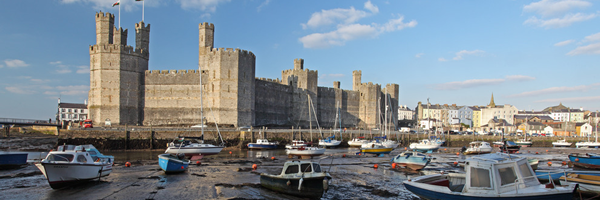
No tour of the historic sites of Wales could fail to miss this mighty, impressive and remarkably well preserved castle in the north of Wales.
Designated as a World Heritage Site, the castle was built by King Edward I – Edward the Confessor – in the 13th century. His son, the first Prince of Wales was born there in 1284 and the current Prince of Wales was invested there in 1969.
Where to stay
- Follow the river just a couple of miles upstream from Caernarfon Castle and you will find – without too much difficulty – the Riverside Camping site in the village of Pontrug. The site boasts a number of “deluxe” caravan pitches not only on their own hard standing, but also with their own water, electric and TV points and set in individually landscaped lawns;
- Less than 2 miles to the east of Caernafon is the Rhyd y Galen Caravan Park which is also just a 15 minute walk away from the Eryri Snowdonia Trail – all pitches have water, electric hook-up, drainage and water;
- Overlooking the Menai Straits and within walking distance of Caernafon is the Coed Helen Holiday Park, which has 50 grass pitches, all with electrical hookup, with water and drainage points nearby.
The name alone conjures up some of the mystery of histories lost in the mists of time and the Iron Age hill fort at Ffridd Faldwyn is sure to fascinate ancient history buffs.
The earthworks occupy a commanding position on a hilltop that overlooks the River Severn and one of its strategic crossing points. Ffridd Faldwyn, therefore, represents a forerunner of other Roman and Medieval fortifications in the area.
Where to stay
- Seven miles or so to the north of Ffridd Faldwyn is Rhyd-y-Groes Touring and Camping Park, set in 12 acres of woodland and farmland in the heart of the Border Country and offering 30 caravan pitches – to adults over the age of 25 only;
- Argae Hall Caravan Park is primarily a site for static holiday homes, but also offers a whole field of level touring caravan pitches on grass, all with electrical hookup and only a handful of miles from the site at Ffridd Faldwyn;
- If you are looking for 5-star luxury on an adults-only touring site, then Daisy Bank Touring Caravan Park might be the place for you – it is situated just outside Montgomery town, so ideally placed for visits to the Iron Age fortifications.
Pembroke Castle, Pembrokeshire
A history buff of Norman England? Then you won’t fail to be impressed by the mighty castle in Pembroke. Built by the Norman invaders in 1093, it is the only castle never to have succumbed to Welsh counter-attack.
It stands in a commanding position between two coastal inlets and is remarkably well preserved.
Where to stay
- Freshwater East Caravan Club Site is on Trewent Hill, within the Pembrokeshire coastal National Park, just a few miles from Pembroke itself and offering a total of 128 caravan pitches, 65 of which are on hard standing;
- Just two miles or so outside Pembroke and near the ferry crossing in Pembroke Dock, is the working farm and Windmill Hill Caravan Park, which offers 30 soft pitches for caravans;
- Only 10 miles or so north of Pembroke, close to Haverfordwest is Redlands Touring Caravan & Camping Park, which has a number of grass pitches but also 32 hard standing pitches, all with 10 amp electrical hookup.
Midlands
Shakespeare’s birthplace, Stratford-upon-Avon, Warwickshire
What better place to start buffing up your Elizabethan History than the very heart of England, where William Shakespeare had his birth.
The half-timbered house is still standing – and carefully preserved – in the very centre of Stratford-upon-Avon. Visiting it is like taking several steps back in history. The house has wheelchair access and there is a short audio-visual tour, available in several languages, as you enter the building.
Where to stay
- Dodwell Park is just two miles southwest of Stratford and set in idyllic, rolling English countryside that seems little changed since Shakespeare’s time. There are both grass and hard standing pitches for your touring caravan and it is possible to book your stay online and use the automatic calculator to find out the price;
- Only a mile from the town centre, in the village of Tiddington – and with a river taxi service to and fro – Riverside Park offers 100 grass pitches, some of them on the banks of the Avon, all with electrical hookup.
Birmingham Back to Backs, West Midlands
If the social history of 19th century industrialisation is your favourite period, this unique exhibition and recreation of life for the working classes of the time might help bring your interests and researches into real life.
Staged by the National Trust, access to the site is by joining one of the regular guided tours of the streets and houses of 19th century Birmingham.
Where to stay
- Just a few miles south of the city centre you are likely to be surprised by this rural setting so close to the sprawling conurbation – Chapel Lane Caravan Club Site, which offers a generous 117 pitches, 85 of which are on hard standing;
- To the northeast of Birmingham, close to Sutton Coldfield, lies Marston Caravan Park, which offers many caravan pitches on both grass and hard standing, with the optional use of electrical hookup;
- A 30 minute drive from the centre of Birmingham, in the leafy glades of the Forest of Arden is the adults only Somers Wood Caravan Park, which offers 40 pitches on both grass and hard standing, with four of the latter being fully serviced – all pitches, however, are provided with 10 amp electrical hookup.
Kenilworth Castle and Elizabethan Gardens, Warwickshire
Just north of the county town of Warwick lies Kenilworth, the home of an impressive, 900 year old castle and its associated gardens.
Managed by English Heritage, the castle is one of the jewels in this heart of English history – a fortress, built in 1120 during Medieval times that later became a palace to impress Queen Elizabeth I during her reign. With a history so rich as this, it is impressive how well conserved it remains today.
Places to stay
- Caravan Club members might want to stay at Springhill House on the Birmingham Road in Kenilworth itself and a Certified Site (CS), which means that the maximum number of caravan pitches cannot exceed five – so your peace and quiet more or less assured;
- Harbury Fields Farm Caravan Park is less than six miles from Kenilworth close to the county seat of Warwick and offers 58 hard standing, fully serviced pitches for touring caravans;
- Also to the northwest of Warwick is Mousley House Farm Camping & Glamping Site, a rural, four-acre site offering grass pitches with electric hookup for caravans.
East Anglia
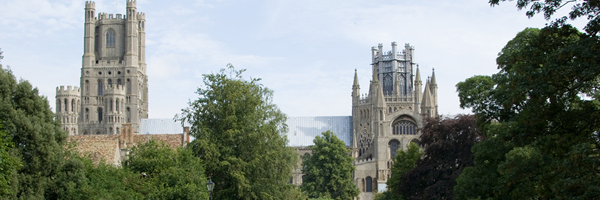
An important cathedral – ranking alongside Canterbury and Glastonbury – has been on this site since seventh century Saxon times. To say it is steeped in history, therefore, might be something of an understatement.
The original cathedral was rebuilt following the Norman invasion and in the 14th century the iconic “lantern tower” was constructed.
Ely Cathedral represents a huge slice of English history in religious architecture.
Where to stay
- On the banks of the River Ouse and in the heart of the Fens, just 5 miles from Ely is the adults only Riverside Caravan & Camping Park – all caravan pitches are on grass but each one has an electric hookup;
- Two miles south of Ely in the village of Little Thetford is Two Acres Caravan & Camping offering 36 grass pitches for touring caravans, each with an electric hookup;
- About eleven miles southeast of Ely, in the village of Mildenhall is the Caravan Club’s Mildenhall site, offering a total of 70 pitches for touring caravans, six of which are on hard standing.
At the time of the Norman Conquest in 1066, as any history buff might tell you, Norwich was England’s third largest city after London and York. William the Conqueror wasted no time, therefore, in building a fortress – first as timber and earthworks but by 1098 in stone – to protect the city.
After such auspicious beginnings, however, the castle at Norwich fell into decline and by the 14th century was in use solely as the county gaol. In 1883, however, a revived interest in its strategic and architectural importance saw Norwich Castle restored to past glories and the home of the county’s museum.
Where to stay
- Ride a bike, take a bus or use simple shank’s pony to get from Norwich to a comfortable caravan site, the Norwich Camping and Caravanning Site, which offers 50 grass pitches on the banks of the river leading into the famous Norfolk Broads;
- Swans Harbour Caravan and Camping Site is just seven miles from the city of Norwich and offers all grass pitches on its four-acre site;
- Bedingham Hall Farm is an 800-acre working farm situated between Norwich and the small town of Bungay, offering grass pitches with electrical hookup, nearby drinking water taps and emptying points for your chemical toilet.
When is a grave not a burial site but a flint mine? Answer: when it is at the 4,000 year-old Grimes Graves in Norfolk – as any history buff might tell you.
This is one of the most interesting Neolithic sites in Britain and comprises more than 350 hollows in the ground (hence the name “graves”) which were, in fact, the openings of mines that were worked for valuable flints. Managers of the site, English Heritage have excavated one of those shafts so that visitors can descend the 30 feet or so to see at first hand the jet-black flints from the mine.
Where to stay
- A Caravan Club site at Thetford Forest is in the village of Hilborough, just a mile or two from Grimes Graves and offers 83 pitches for touring caravans, 37 of which are on hard standing.
Northeast England
Durham Cathedral, County Durham
The Dean of the cathedral – no less – describes this monument as one of the finest buildings in Europe.
It still dominates the city after nearly 1,000 years since its construction in 1093 as a shrine to St Cuthbert and a communal centre for the Benedictine monks of the northeast.
The cathedral has endured through the major setbacks of the Reformation and dissolution of the monasteries in 1539 and through the English civil wars in the 17th century – Oliver Cromwell, for instance, used the building as a prison to hold some 3,000 Scottish prisoners.
Where to stay
- Strawberry Hill Farm is a caravan and camping site just a few miles southeast of the city of Durham in the village of Old Cassop and offers a choice of hard standing and grass pitches, each with a 16 amp electricity hookup for touring caravans;
- About mid-way between Durham and Newcastle, in the heart of the Durham countryside, is Beanish Caravan Park. The 10-acre site has a number of static caravans but also caters for touring caravans and tents;
- Durham Grange Caravan Club Site is only three miles from the city centre and offers 76 pitches for touring caravans, 51 of which are on hard standing and 8 fully serviced.
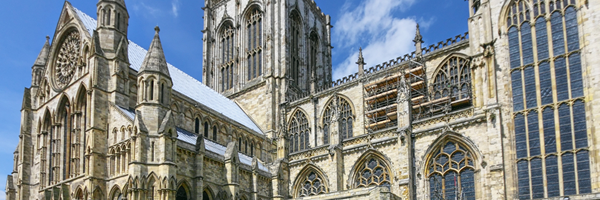
If a whole city can earn the title of especial historic interest, York has to be one of them.
Whether you are leafing through the official tourist guide or a publication such as Lonely Planet, superlatives abound – the latter describing it as having “extraordinary cultural and historical wealth”. Even today the city’s rich history is sealed within the 13th century walls that encircle it – letting you catch up with its history along these elevated walkways.
Where to stay
- York Caravan Park: the name says all you really need to know. It is within the inner ring road, just 2 miles from the city centre and the adults only park offers 55 pitches on hard standing;
- Acomb Grange is a small touring caravan site with just five pitches, only three miles from York Minister in the centre of the city. Acomb Grange has a claim to an important piece of history in its own right – it is believed to be the site of a Villa where Constantine the Great was proclaimed Roman Emperor by the troops of Eboracum (as York was then called);
Fountains Abbey, near Ripon, North Yorkshire
Probably the best known and most impressive abbey in the north of England, Fountains’ history stretches back to the pre-Reformation days when it was built, extended and made as majestic as it stands today by its Medieval community of Cistercian monks.
Now owned and administered by the National Trust, Fountains Abbey retains an atmosphere steeped in history, majesty and inspiration.
Where to stay
- Riverside Meadows Holiday Park is on the banks of the River Ure just outside the historic city of Ripon, itself only a few miles from Fountains Abbey. Set within attractive parkland, the site offers both grass and hard standing pitches, some with and some without electric hookup;
- Woodhouse Farm Holiday Park is set in 50 acres of the woodland and fields of Nidderdale and offers both grass and hard standing pitches, some with and some without electric hookup – located in the village of Winksley, near Ripon;
- Yorkshire Hussar Inn Holiday Caravan Park is only two miles from Fountains Abbey in the direction of the spa town of Harrogate. The owners warn that on a relatively small park space for touring caravans is relatively limited, so it is advisable to let them know the length of your ‘van beforehand.
Northwest England
The Beatles might be only a generation away but their contribution to the history of pop music is undeniable. Any student of the history of contemporary music, therefore, might consider the club in which the Beatles first found fame a worthy pilgrimage.
The Club organises a number of guided tours and every August there is a themed “BeatleWeek”.
If the music fails to turn you on, however, the city of Liverpool and its historical status as one of the country’s busiest ports offers plenty for the history buff.
Where to stay
- Just 17 miles from the centre of Liverpool, in the seaside resort of Southport there lies the Southport Caravan Club Site right alongside the Esplanade, where 171 pitches for touring caravans may be found, all on hard standing;
- Lying to the west of the River Mersey, with access to the city via tunnel or ferry is the small Camping and Caravanning Club Certified Site (CS) for only half a dozen or so touring caravans at Arrowe Brook Farm Campsite.
Hadrian’s Wall, Cumbria and Northumberland
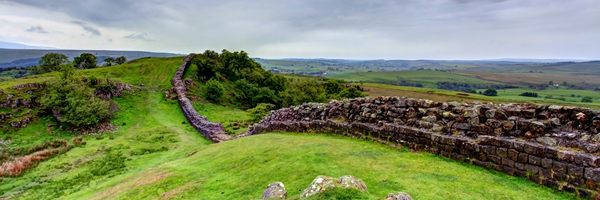
Want to know your history about the Roman occupation of Britain? A pretty good place to start is any spot along the 73 miles covered by the World Heritage Site of Hadrian’s Wall.
The defensive wall was built following the visit to England in the year AD122 by the emperor Hadrian and was a garrison for soldiers from all over the Roman Empire for the next 300 years or so.
English Heritage museums are dotted along the length of the wall and house important and fascinating Roman artefacts.
Where to stay
- Hadrian’s Wall Camping and Caravan Site is actually in the Northumberland village of Melkridge, but only a few miles south of Hadrian’s Wall and mid-way between Newcastle to the east and Carlisle to the west – it offers more than eight touring pitches on both grass and hard standing;
- Also to the north of Carlisle and just a few miles from one of the best vantage points for Hadrian’s Wall and close to the Roman Army Museum is an adults only site, Green Acres Caravan Park, offering 10 pitches (both grass and hard standing) for touring caravans.
Carlisle Castle, Carlisle, Cumbria
Not everyone seems to agree that this is the prettiest of England’s many castles, but that does not detract from the importance of this northern stronghold over the past nine centuries or so – did you know, for example, that it is the most besieged castle in England?
English Heritage encourages visitors to walk the medieval rooms of the castle and see how these were turned to later use as military buildings during the 19th century.
Nearby, is Cumbria’s Museum of Military Life.
Where to stay
- Just a mile or so outside Carlisle is the Dalston Hall Holiday Park and Golf Club which offers what the park owners describe as a “large number” of pitches for touring caravans, all on hard standing with 16amp electric, water and even a courtesy night light;
- Englethwaite Hall Caravan Club Site is in Aramthwaite, near Carlisle, and offers 68 touring pitches, 66 of which are on hard standing;
- Cairndale Caravan Park is a small site for up to five touring caravans, with hard standing, some nine miles from Carlisle and set in the rugged countryside of Cumbria.
Scotland
One of the finest and most handsome of glens in Scotland, Glencoe still conjures up a chill down the visitor’s spine when entering this fold in the mountains. It may be the spirits of the dead MacDonalds cruelly slain by treacherous men of the rival Campbell clan in 1692.
But the fascinating history of Glencoe is much older than this – according to legend it was the home to one of the greatest Gaelic heroes, Fingal.
Where to stay
- Glencoe Camping and Caravanning Club Site sits at the foot of the mountains surrounding the glen, just a short walk from the Glencoe visitor centre, and offers 105 pitches for touring caravans, all of which are on hard standing;
- Invercoe, also in Glencoe, offers what the owners describe as “lots of touring pitches”, most of which are on grass, but some on hard standing;
- Enjoying some of the most stunning Highland views and only a few miles from Glencoe is Caolasnacon Caravan & Camping Park, on the shores of Loch Leven, near Kinlochleven – the site is not divided into individual pitches, so it is very much a first come, first served basis for finding your space.

The castle is the oldest building in this capital of Scotland and has well earned its position as the most visited historic site in the country.
The iconic rock on which it was built first had an Iron Age fort there, before the castle itself was built, developed and extended. The castle was a prize over which the Scots and English fought long and hard during the Wars of Independence and was recaptured from English occupation in 1314.
It is the jewel in the crown of Edinburgh’s World Heritage Site status.
Where to stay
- Drummohr Holiday Park may be found along the coast at the seaside town of Musselburgh, just six miles from the centre of Edinburgh – facilities for touring caravans include generously spaced pitches, many on hard standing;
- Approximately 12 miles to the southwest of Edinburgh is Linwater Caravan Park – pitches are spacious, on grass or hardstanding and serviced with 16 amp electricity hook-ups;
- Just off the Edinburgh City Bypass and only seven miles from the Castle is Slatebarns Caravan Park – pitches for touring caravans are either on grass or hard standing and each comes with a 16 amp electric hookup.
New Lanark World Heritage Site, South Lanarkshire
Students of the history of the industrial revolution in Britain will have heard of the name Robert Owen – a philanthropist with utopian aspirations.
What may be less well known, but a sufficiently historical heritage to have gained World Heritage Site status in 2001, is the village of New Lanark which he built in the 18th century and is remarkably well preserved today. It offers considerable insight, therefore, into the early years of industrialisation.
Where to stay
- Just three miles away is the Kingdom Park Home Holidays, offering 40 pitches for touring caravans, all with electrical hookup;
- Also a short distance from New Lanark, between the River Clyde and the River Mouse is the Clyde Valley Caravan Park;
- 13 miles away in the village of Biggar is Lettershaws Farm Campsite, which is divided into two parts – one serves as a 5-pitch Certified Site (CS) for Camping and Caravanning Club members only and a further field licensed to accommodate up to 40 touring caravans for rallies.
Northern Ireland
Carrickfergus Castle, Carrickfergus, County Antrim
History, myth and legend, Northern Ireland seems to have them all – and Carrickfergus Castle is no exception.
A Norman castle on the north shore of Belfast Lough, Carrickfergus Castle is one of the best examples of medieval architecture in Northern Ireland. During its 800 year history the castle has been besieged by Scots, Irish, English and French and today mounts exhibitions and displays interpreting that past.
Where to stay
- A short mile and a half along the shore of Belfast Lough is Jordanstown Caravan Park, offering 14 pitches for touring caravans, each with its own water, drainage and electric hookup;
- Further along the Lough Road is Six Mile Water Caravan Park, awarded a 5-star rating by the Northern Ireland Tourist Board and offering 37 pitches for touring caravans, all on hard standing and with electrical hookup;
Possibly one of the best examples of Anglo Norman Cistercian architecture in the whole of Northern Ireland, the abbey building of the abbey started in 1193 but fell prey to the dissolution of monasteries in 1541.
Feel free to wander amongst the ruins of this monument and soak up the history it seems so eager to tell.
Where to stay
- Ballywhiskin Caravan and Camping Park is beside the sea of the Ards Peninsula on the northeast coast of County Down, some six miles or so from Grey Abbey and offers 17 hard standing pitches for touring caravans, each with electric hookup;
- On the opposite side of Strangford Lough and 20 miles or so from Grey Abbey is the Camping and Caravanning Club’s Delamont Country Park, which offers 63 pitches for touring caravans, many on hard standing.
Mountsandel Wood, Coleraine, County Londonderry
If your interest in history is of the Stone Age you might want to visit the earliest known human settlement from nearly 10,000 years ago here at Mountsandel Wood.
There is a natural weir nearby and flint tools which have been excavated here suggest the early settlers used the river for salmon fishing.
In Norman times fortified earthworks were also built on the site and from here a forest walk today runs down to the banks of the River Bann.
Where to stay
- Tullans Country Holiday Park is a mile or two from Mountsandel Wood’s footpath trail and is set on a 100-acre working farm, where pitches for up to 36 touring caravans are offered, all with 10 amp electric hookup;
- Downstream of the River Bann lies the Caravan Club’s Drumaheglis Marina Caravan Park, which has 55 fully serviced pitches, all on hard standing;
- A 10 mile drive north of Mountsandel Wood and the town of Coleraine to Bushmills lies Ballyness Caravan Park with 50 pitches for touring caravans, all on hard standing, with space enough to park your car alongside and with individual electric hookup, water and drainage.
Summary
Anywhere and everywhere you look in Britain there seems to be one site or another of particular historical interest – and this highly selective guide has barely scratched the surface.
One thing it might have shown, however, is that for every one of those sites of historical interest, there is likely to be a selection of nearby caravan sites on which to pitch your tourer.
Some sites are big, others small, some offer basic facilities, others are 5-star rated. Wherever your interest in history takes you, you are likely to find a warm welcome at a touring caravan site close by.


